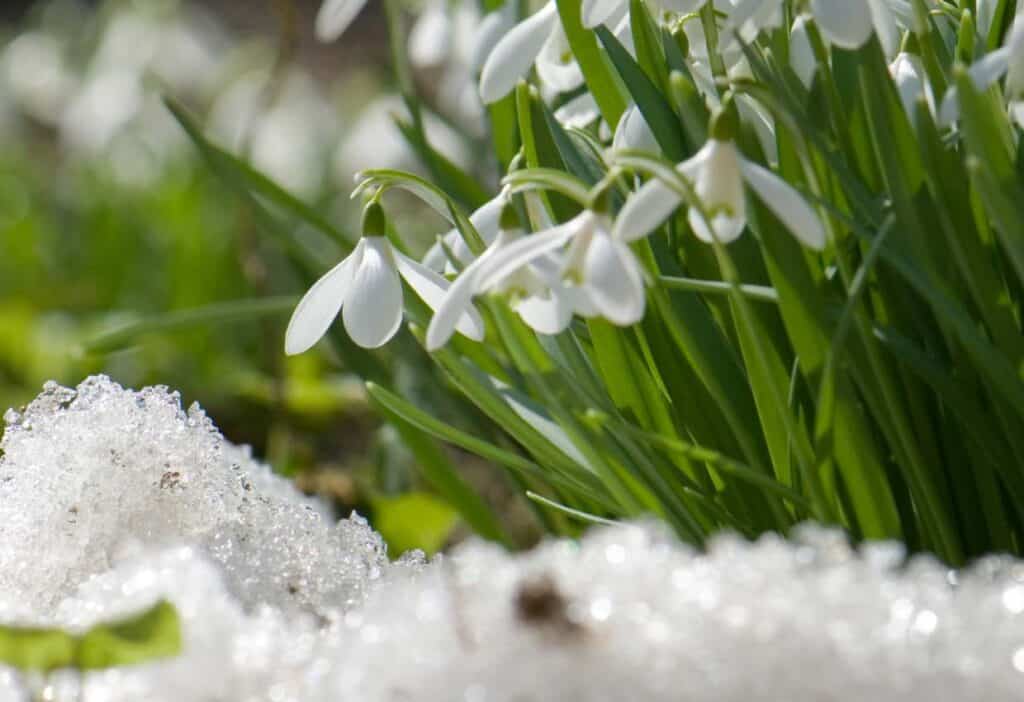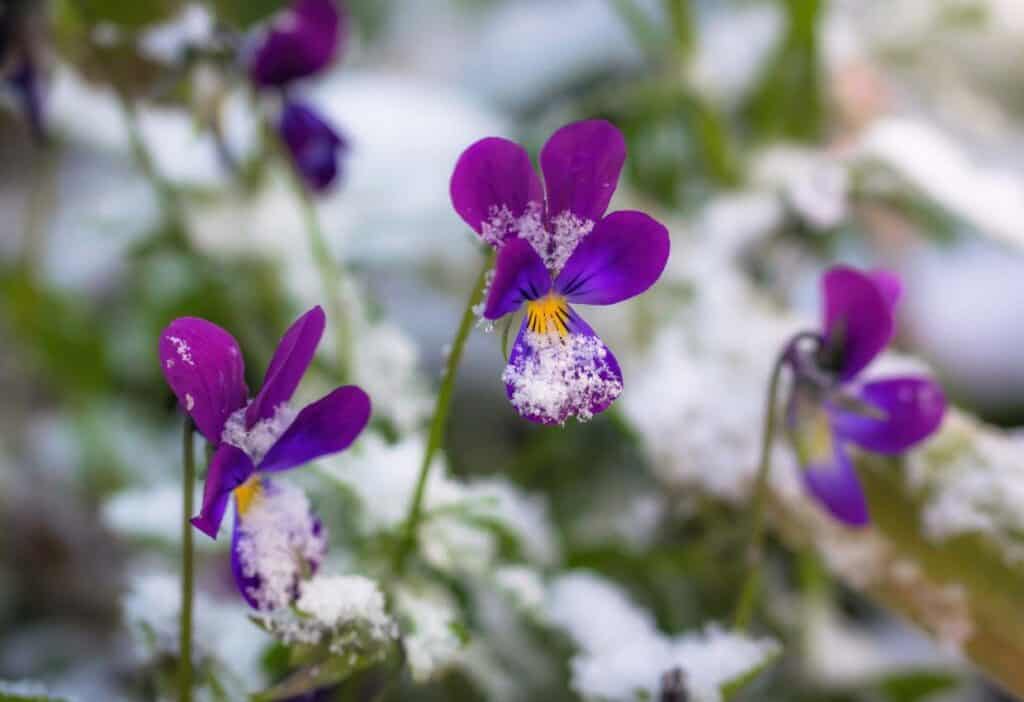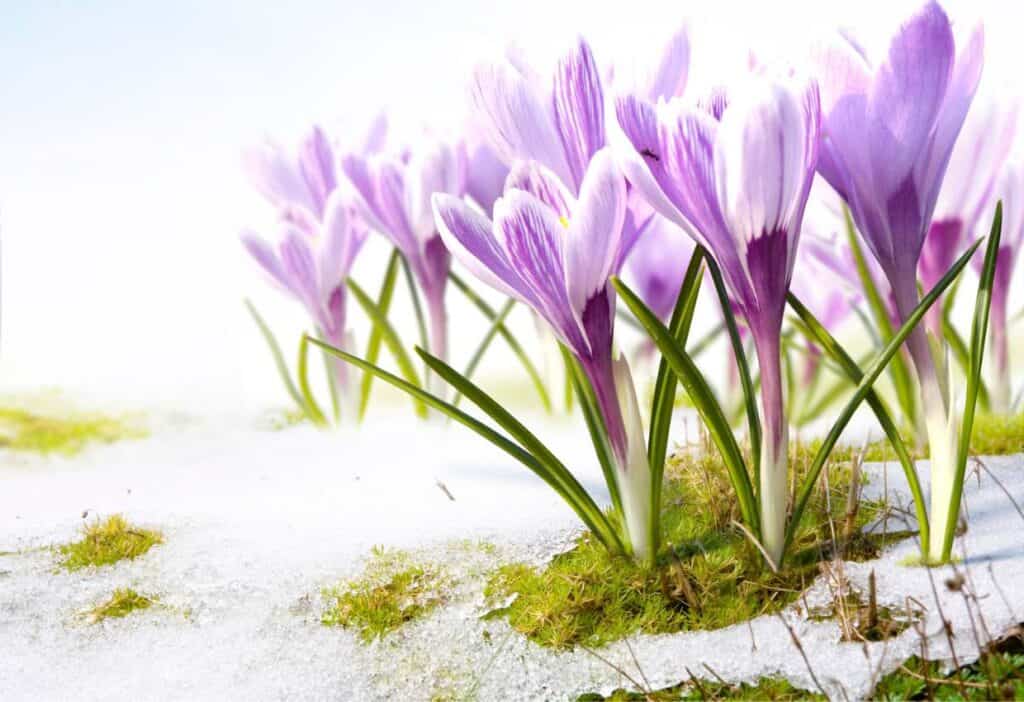Winter offers a unique opportunity to transform gardens with colorful and fragrant flowers that thrive in the colder months. While many assume that gardens must lay dormant during the winter, a variety of winter flowers challenge this notion by blooming even in chillier conditions. These blooms add a splash of color to the landscape and nourish local wildlife, such as bees and butterflies seeking sustenance.

The flowers that can flourish in winter are surprisingly vast, ranging from the vibrant crocuses that brighten the tail end of winter to the robust hellebores known for their ability to withstand frost. Planting winter flowers is a beautiful way to maintain year-round activity in a garden, ensuring it remains a lively sanctuary even during the colder seasons.
Popular winter blooms
Winter brings a unique palette of blooms that can revitalize the quietest gardens. From resilient bulbs that push through the snow to vibrant shrubs that defy the frost, these plants offer a range of colors and interests.
Bulbs
Bulbs are known for their ability to survive underground during the colder months, emerging with vibrant colors when the chill begins to subside. This unique adaptation not only ensures their survival through harsh conditions but also heralds the arrival of spring with their splendid blooms.
- Crocus: Early bloomer that attracts early pollinators. Crocuses are available in a large variety of colors.
- Snowdrop: One of the very first signs of spring, snowdrops are often seen in clumps of delicate bell-shaped white blooms.
- Winter aconite: Bears bright yellow flowers, adding a spot of cheerfulness to the barren landscape.
Evergreen shrubs
Evergreen shrubs maintain their foliage throughout winter, providing the backbone of any winter garden. Their consistent greenery offers a stark contrast against the sparse landscape, adding color and structure to gardens even in the coldest months.
- Camellia: Comes in various colors, from whites to deep reds.
- Daphne: Notable for its fragrant flowers ranging from pink to light purple.
- Mahonia: Bold yellow flowers, often with fragrant blooms.
FDL’S 75 Best Bites

Our cookbook with 75 tasty recipes will be your go-to kitchen companion for easy dinners with ad-free recipes right at your fingertips. Crafted by experienced chefs and recipe developers, this collection offers a treasure trove of tried-and-true dishes that make mealtime a breeze.
Get the Recipe: FDL’S 75 Best Bites
Vibrant annuals and perennials
Annuals and perennials bring a quick burst of color and can be swapped out each season. This makes it easy to refresh a landscape with new hues and textures, keeping the garden lively and visually appealing year-round.
- Pansy: Hardy and available in a multitude of colors, pansies are perfect for brightening borders and serving as edible flowers.
- Violet: Known for their delicate, heart-shaped blooms and wide range of colors, violets are very cold-hardy.
- Hellebore: Thrives in partial to full shade, offering mostly pastel colors. They are also known as Christmas roses.
“Our garden is full of snowdrop bulbs which come up with small white blooms near the end of winter. It’s always a happy sight as they’re a sign that spring is just around the corner.”
— Dan Morris, Fire and Saw

Caring for winter flowers
Proper care during the colder months can ensure that winter flowers survive and thrive. This involves understanding their unique sunlight requirements, protecting them from frost and maintaining a suitable watering and fertilization schedule.
Meeting sunlight needs
Winter flowers vary in their sunlight needs, with some thriving in full sun and others preferring partial shade. For example, flowers like Hellebores are suited for areas receiving partial to full shade. These perennial plants can blossom in mid to late winter and are best situated in a garden that mimics their natural woodland habitat.
Managing water and frost
Watering needs for winter flowers depend on the USDA hardiness zone where the garden is located. In zones with moist winters, supplemental watering might be minimal. Still, a regular watering schedule is crucial in drier zones to keep the soil from drying out. Flowers such as crocuses require well-drained soil to prevent root rot while overwatering during winter can be especially harmful due to slower evaporation rates. Protecting plants from frost is vital; mulching or using frost cloths can provide necessary insulation against freezing temperatures.
Fertilization and maintenance
Winter flowers require less fertilizer during the cold season since their growth slows down. Applying a balanced fertilizer at the start of the winter can help provide the nutrients necessary for health and flowering. Regular maintenance, including deadheading spent flowers and removing dead foliage, encourages healthy growth and prevents disease.
“I love cyclamen — they’re my go-to winter flowers for a hint of color. They’re not super fans of harsh winters, but I just mulch around and find them a sunny spot.hey even pop up with their pretty flowers, sometimes even when it’s lightly snowing. It’s like my secret weapon for some winter cheer in the garden!”
— Jere’ Cassidy, One Hot Oven

Winter flower garden design
Creating a winter flower garden involves selecting plants with vibrant colors and exciting textures, ensuring the garden remains visually appealing even during the coldest months. Thoughtful design integrates colors and structures that can withstand winter conditions.
Color themes and combinations
Winter landscapes benefit from color pairings that create visual warmth. Red berries from shrubs like the daphne shrub add pops of color against snowy backdrops. Evergreen plants maintain a rich green hue, serving as a perfect canvas for highlighting brighter tones. Bulbs planted in the fall, such as snowdrops and crocuses, emerge in late winter with whites and purples, complementing the overarching color scheme. Ornamental cabbage and kale bring unexpected purples, pinks and greens to the winter palette, creating eye-catching clusters.
Incorporating structure and texture
Strategic placement of shrubs, seeds and bulbs creates a framework that remains once the softer blooms have faded. With cascading white flowers and evergreen foliage, Pieris japonica adds vertical interest and a gentle texture. Meanwhile, the unique leaf structure of ornamental cabbage and kale offers a robust ground-level texture, often accentuated with a dusting of frost.
Kristen Wood is a photographer, writer and creator of Schisandra and Bergamot and MOON and spoon and yum. She is also the author of Vegetarian Family Cookbook, Fermented Hot Sauce Cookbook and Hot Sauce Cookbook for Beginners. She is an herbalist and certified functional nutrition expert as well. Her work has been featured in various online and print publications, including Healthline, Martha Stewart, Yoga Journal and more.